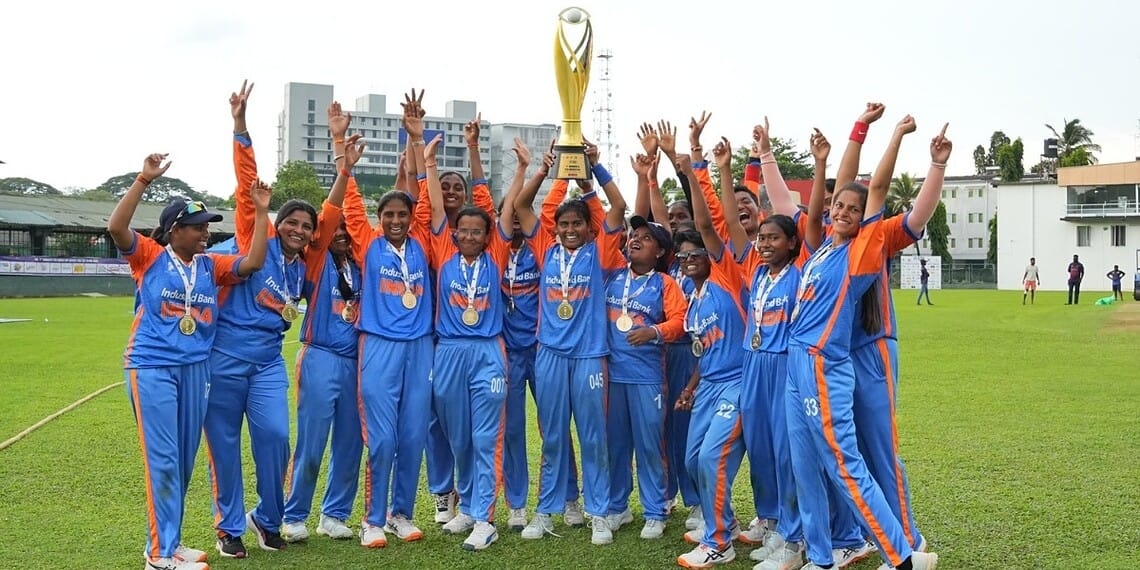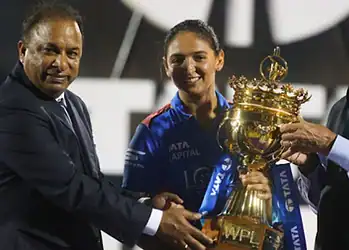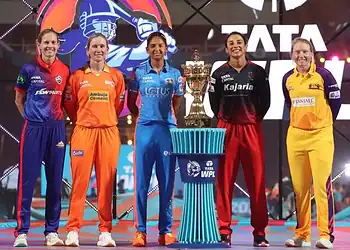India has won the first-ever Blind Women’s T20 World Cup in Sri Lanka, defeating Nepal by seven wickets in the final held at the P Sara Oval in Colombo. The historic triumph marks a watershed moment for women’s blind cricket globally and showcases India’s growing dominance across all formats of the sport.
Table of Contents
The Grand Finale: India’s Clinical Victory
India kept Nepal to 114/5 in their allotted 20 overs before passing the score with just three wickets down in 12.1 overs to claim the silverware. The comprehensive victory capped off what had been a flawless tournament campaign for the Indian team.
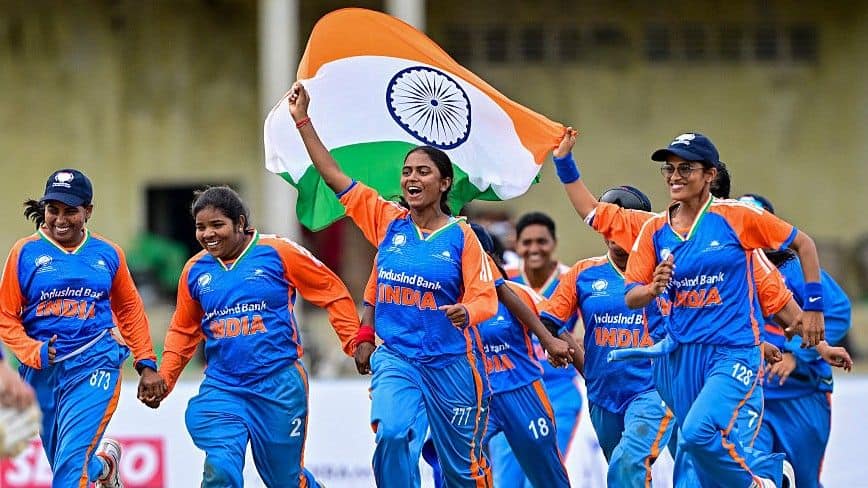
| Final Match Summary | Details |
|---|---|
| Venue | P. Saravanamuttu Stadium, Colombo |
| Date | November 23, 2025 |
| Nepal Innings | 114/5 (20 overs) |
| India Innings | 117/3 (12.1 overs) |
| Result | India won by 7 wickets (47 balls remaining) |
| Player of the Match | Phula Saren (44* off 27 balls) |
Phula Saren’s brilliant unbeaten 44 runs off just 27 balls guided India to victory, completing a flawless, unbeaten campaign. Opener Karuna K also played a crucial role with a brisk 42 from 27 deliveries, helping India bring up 100 runs within the first 10 overs.
India’s Perfect Tournament Record
The Indian side defeated Sri Lanka, Australia, Nepal, USA and Pakistan in the league phase, before another convincing win over the Australians in the semi-final. The unbeaten run through the entire tournament demonstrated India’s complete dominance over the competition.
Tournament Results Breakdown
India started their campaign with a convincing win over Sri Lanka, then registered a 57-run victory against Australia after the Aussies failed to chase down the 293-run target. India overcame Pakistan by chasing down the 136-run target in just 10.2 overs, before thrashing Australia by nine wickets in the semi-final.
| Match | Opponent | Result | Margin | Key Highlights |
|---|---|---|---|---|
| Match 1 | Sri Lanka | Won | Dominant | Bowled out Sri Lanka for 41, chased in 3 overs |
| Match 2 | Australia | Won | 57 runs | Posted 292/4, dismissed Australia for 57 |
| Match 3 | Nepal | Won | League Stage | Comfortable victory |
| Match 4 | USA | Won | League Stage | Continued unbeaten streak |
| Match 5 | Pakistan | Won | 10.2 overs | Chased 136 in rapid fashion |
| Semi-Final | Australia | Won | 9 wickets | Comprehensive performance |
| Final | Nepal | Won | 7 wickets | Historic championship |
Tournament Format and Participating Nations
Sri Lanka and India co-hosted the first-ever Women’s T20 World Cup – Cricket for the Blind, scheduled from November 11 to 23, 2025. The tournament opened in New Delhi with an inauguration and five matches (November 11-13), followed by four games in Bengaluru (November 14-16), before Colombo staged the concluding leg, hosting 15 matches including the semi-finals, final, and closing ceremony.
The tournament brought together six nations: India, Nepal, Pakistan, Sri Lanka, Australia, and the USA, representing a significant milestone for women’s blind cricket on the global stage.
Understanding Blind Cricket: The Unique Format
Blind cricket uses a white plastic ball filled with ball bearings so players can hear it. The format has specific rules designed to ensure fair competition across different levels of visual impairment.
Key Rules and Classifications
Each team has 11 players, but at least four must be completely blind, with players wearing blindfolds to ensure fairness. Players are grouped by how far they can see: B2 players can see up to two metres and B3 players up to six metres, while each team can have up to eight B1 players who are totally blind.
Before bowling, the bowler must ask the batter if they are ready, then shout “play” and deliver the ball underarm with at least one bounce. Fielders clap once to show where they are standing, and when a B1 player scores a run, it counts as two.
Star Performers and Individual Brilliance
In their opening match, India made a statement by bowling out Sri Lanka for just 41, then chased that target down in a mere three overs, powered by sharp fielding with seven run-outs. Against Australia, India posted a massive 292 for four, powered by a 91 from Deepika TC and a mature 54 not out from Phula Saren, before dismissing Australia for only 57.
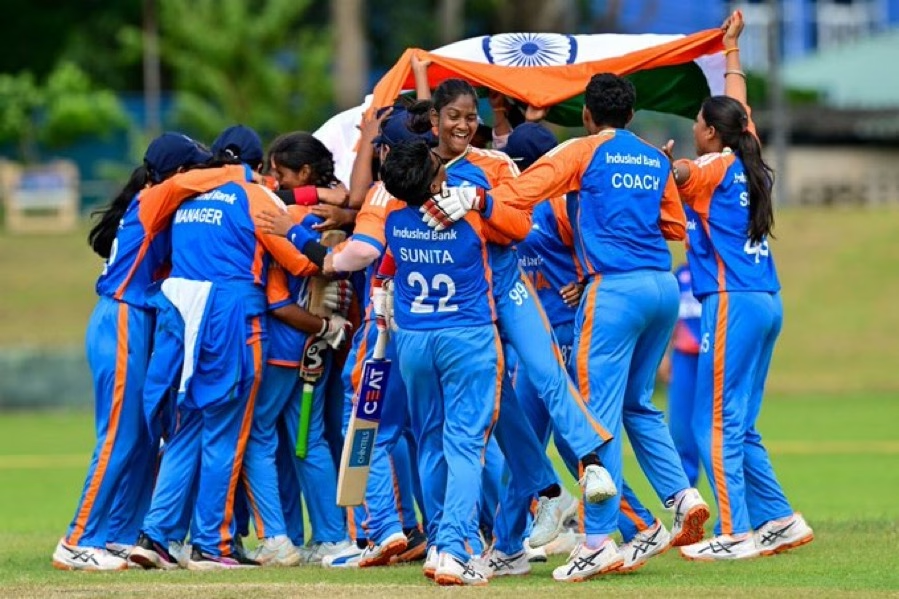
Noteworthy individual performances included Pakistan’s Mehreen Ali, who topped the batting charts with over 600 runs, including two massive centuries, highlighting the competitive nature of the tournament.
National Recognition and Celebration
Prime Minister Narendra Modi congratulated the Indian blind women’s cricket team, stating: “Congratulations to the Indian Blind Women’s Cricket Team for creating history by winning the inaugural Blind Women’s T20 World Cup! More commendable is the fact that they stayed unbeaten in the series“.
Modi added that “This is indeed a historic sporting achievement, a shining example of hardwork, team work and determination. Each player is a champion! My best wishes to the team for their future endeavours. This feat will inspire generations to come“.
International Cricket Council (ICC) chairman Jay Shah congratulated the team for their feat, which he said “redefines the limits of ability” and “inspires differently abled athletes in India and around the world”.
Captain’s Pride and Team Spirit
Following the historic victory, captain Deepika TC expressed immense pride in the team’s achievement, emphasizing the collective hard work that went into securing the title: “We are very proud and it is a huge win. Our entire team worked very hard. It is a very strong team and other teams are afraid of playing with us. We are even ready to play with the men’s team”.
Significance for Indian Women’s Cricket
This victory comes just three weeks after the Indian women’s team triumphed over South Africa in the Women’s World Cup 2025 in Navi Mumbai—two milestone victories that underscore the growing prominence of women’s cricket in India, across both mainstream and visually impaired formats.
The double celebration in November 2025 represents an unprecedented golden period for Indian women’s cricket, with champions emerging across all formats and categories. The blind women’s team has demonstrated that determination, skill, and teamwork transcend physical limitations.
Changing Attitudes and Breaking Barriers
Adeline Roe, an 18-year-old player from South Australia, expressed her excitement about being part of her nation’s first blind cricket team: “It’s amazing that we’ve got a blind women’s World Cup… It’s been a wonderful step forward for all women’s blind cricket”.
Sri Lankan Prime Minister Harini Amarasuriya, who presented the trophy to India, thanked all players for helping raise the profile of the visually impaired, acknowledging that the tournament represents far more than sporting competition—it’s about changing societal perceptions and creating opportunities.
Impact Beyond the Boundary
For India’s blind women cricketers, many of whom come from humble, rural backgrounds, participating in world cricket was also about empowerment. The tournament has opened doors for visually impaired female athletes across participating nations, demonstrating that international sporting glory is within reach regardless of physical challenges.
CABI Chairman Dr. Mahantesh G. Kivadasannavar described the event as “a historic moment in women’s blind cricket,” while officials called blind cricket “a shining example of determination, resilience, and extraordinary talent“.

This inaugural tournament has firmly established women’s blind cricket on the global sporting calendar, paving the way for future editions and inspiring countless young girls with visual impairments to pursue their sporting dreams without limitation.
FAQs
How did India perform throughout the inaugural Blind Women’s T20 World Cup?
India remained unbeaten throughout the entire tournament, winning all their matches in the league phase against Sri Lanka, Australia, Nepal, USA and Pakistan, before defeating Australia in the semi-final and Nepal in the final.
What are the special rules in blind cricket that make it accessible for visually impaired players?
Blind cricket uses an audible ball filled with ball bearings, bowlers must shout “play” before delivery and bowl underarm with at least one bounce, fielders clap to indicate positions, and B1 (completely blind) players earn double runs for their scoring.
Which countries participated in the inaugural Blind Women’s T20 World Cup?
Six nations competed in the historic tournament: India, Nepal, Pakistan, Sri Lanka, Australia, and the United States, with India and Sri Lanka co-hosting the event across Delhi, Bengaluru, and Colombo.
Who was the star performer in the final match for India?
Phula Saren was named Player of the Match after scoring an unbeaten 44 runs off just 27 balls with four boundaries, guiding India to chase down Nepal’s 114/5 in just 12.1 overs with 47 balls remaining.
How significant is this victory for Indian women’s cricket?
This triumph came just three weeks after India’s mainstream women’s team won the ODI World Cup against South Africa, marking November 2025 as a historic month with double world championship victories across mainstream and visually impaired cricket formats.

